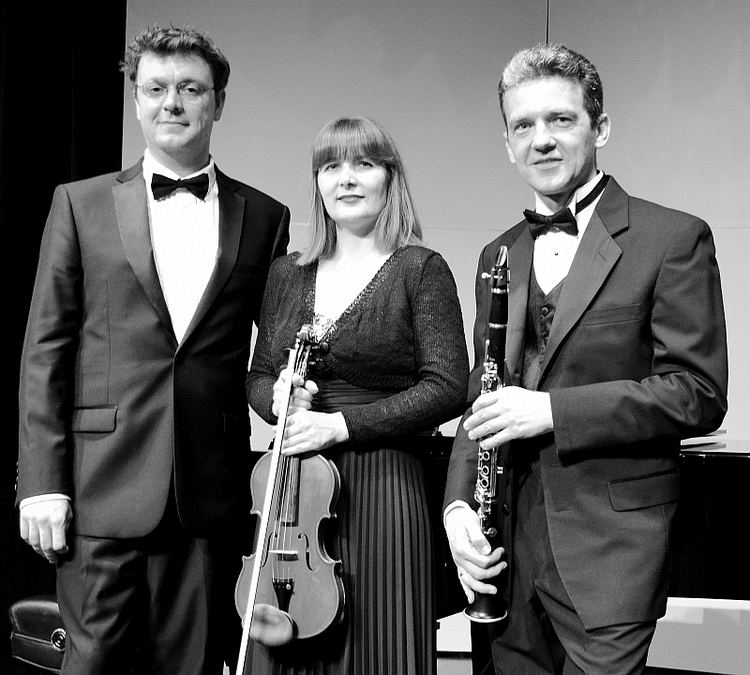 | ||
In music, a trio (an Italian word) is a method of instrumentation or vocalization by three different sounds or voices to make a melodious music or song.
Contents
Instrumental or vocal ensemble
In general, "trio" denotes a group of three solo instruments or voices (Randel 2003). The term is also used to describe a composition for such a group. The most common types of such compositions are the "piano trio"—piano, violin and cello—and the "string trio"—violin, viola and cello (Schwandt 2001). In vocal music, the term "terzet" is sometimes preferred to "trio" (McClymonds, Cook, and Budden 1992).
From the 17th century onward the word "trio" is used to describe a contrasting second or middle dance appearing between two statements of a principal dance, such as a minuet or bourée. This second dance was originally called a "trio" from the 17th-century practice of scoring it for three instruments, for example two oboes and bassoon. Later examples continued to be referred to as trios, even when they involved a larger number of parts (Randel 2003; Schwandt 2001).
In the 18th century, the term "trio" was also used to describe any instrumental composition for three unaccompanied musical strands, regardless of the number of instruments actually involved. Trios for a single keyboard instrument are found in the music of Johann Sebastian Bach, for example his organ trios, BWV 525–30, and three-part inventions, or Sinfonias, BWV 787–801 (Schwandt 2001).
"Trio" also occurs in the name for the musical form trio sonata, which was popular in the 17th and early 18th centuries. A trio sonata is written for two solo melodic instruments and basso continuo, making three parts in all, hence the name trio sonata. However, because the basso continuo is usually made up of at least two instruments (typically a cello or bass viol and a keyboard instrument such as the harpsichord), performances of trio sonatas typically involve at least four musicians.
Popular-music group/band
In rock music, bands most typically have four to five members, but there are also many three-person bands. Notable examples of trios following this pattern include Rush, The Police, Motörhead and Nirvana. However, there are other variations, for example Emerson, Lake & Palmer, where the guitar is replaced by a keyboard. Jimi Hendrix, although often remembered as a soloist, often performed as part of a trio. The Bee Gees were a popular trio during the Disco music era.
A trio may also rely on a combination of instrumentation and vocal harmonization. Crosby, Stills, & Nash began as a trio noted for their vocal congruence. Some trios rely entirely on the singing skills of the performers working in front of pre-recorded instrumental tracks. These include groups like Destiny's Child and TLC. In rap music, a trio may be composed of three performers who alternate vocal parts, as with The Beastie Boys, The Lonely Island, and Foreign Beggars, or may be two vocalists along with a DJ who provides the instrumentation through sampling and turntablism, as with Salt-N-Pepa, composed of two vocalists and DJ Spinderella.
Common forms
Common forms of trio include:
